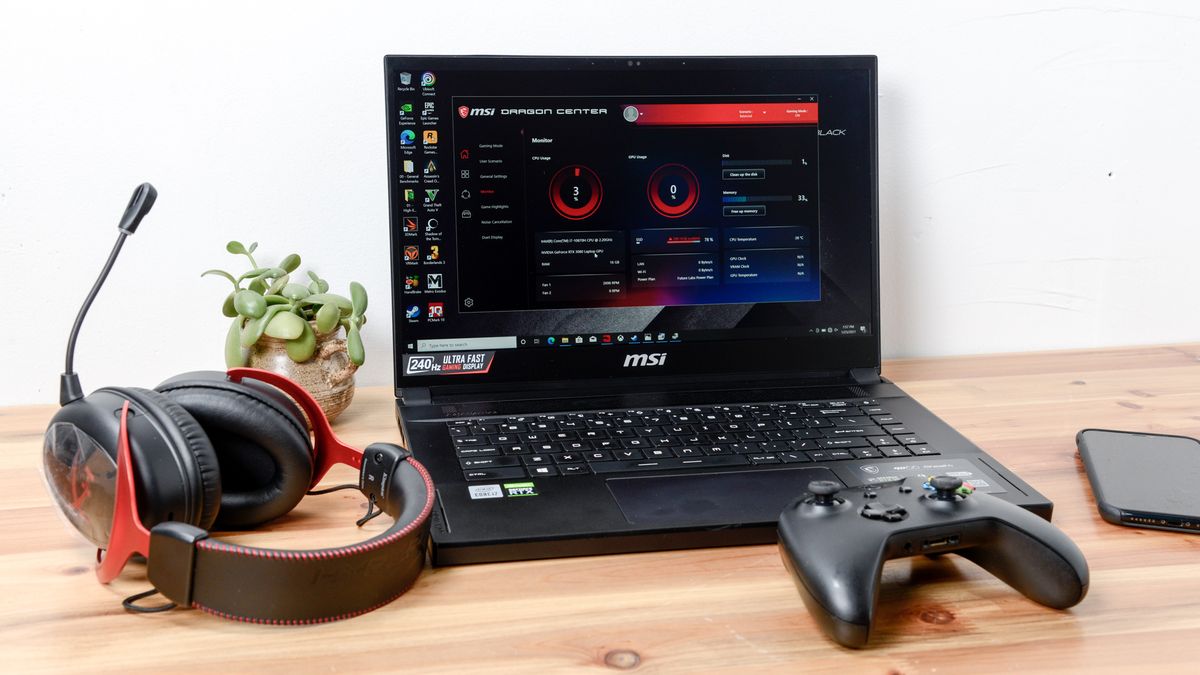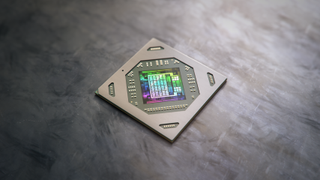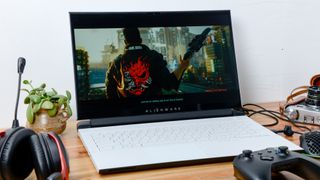Should you get a MUX switch-enabled gaming laptop?
A MUX switch can help bolster your laptop’s gaming performance, but do you need one?

Laptops have advanced significantly in the last decade in terms of gaming performance. As a result of more powerful integrated graphics cards and central processors, many laptops can compete with low to mid-range desktops. However, some laptops use a MUX switch that allows for better gaming performance. Let's discuss what a MUX switch is and why you may consider one for your next gaming laptop.
What is a MUX switch?
A MUX (multiplexer) switch improves graphical performance by swapping the graphics processing unit (GPU) actively used by the display, so instead of pulling from the integrated GPU, it'll channel the discrete GPU. Most laptops use either an accelerated processing unit (APU), which is a central processing unit (CPU) that contains a GPU, or a CPU with integrated graphics to maximize battery life. Gaming laptops, however, can have a dedicated GPU (dGPU) and an integrated GPU (iGPU) alongside the CPU. The system can't switch between these graphics alone, however. To do this function, Nvidia GPUs use a software called Optimus, while AMD and Intel systems use Switchable Graphics.
With an Optimus program enabled, the PC will automatically switch between the weaker integrated graphics and the more powerful discrete graphics based on need. This software helps improve battery life that would otherwise drain faster using only the dGPU. Though Optimus is suitable for gaming on the go and gives up to a 30% boost to performance, the dGPU is still the best way to get the maximum performance out of the system.

Using a MUX switch, you can go into the BIOS and disable Optimus, automatically enabling the more powerful graphics card. Moreover, disabling Optimus enables software like Nvidia Shadowplay and GSync that isn't compatible with iGPUs. Shadowplay is Nvidia’s solution to screen recording and streaming in the vein of OBS and AMD’s Adrenaline software. GSync is a variable refresh rate (VRR) technology that matches the display’s refresh rate to the GPU’s framerate.
How do I check if my laptop has a MUX Switch?
Unfortunately, MUX switches aren’t typically listed on the spec sheet for laptops. Most gaming laptops have a program suite (like Armoury Crate on Asus machines, Alien Command Center for Alienware and Dragon Center for MSI) that adjusts game-centric functions. This is usually where you can learn if the system has a MUX switch or not. Alternatively, you can restart the computer and go into the BIOS to check if the manufacturer has a dedicated or hybrid GPU mode.
What are the benefits of MUX Switch?
While Optimus and other equivalent hybrid technology have their own benefits for power consumption and performance uplift, MUX switches offer a raw power advantage. The dGPU alone will perform better than a hybrid solution at the cost of battery life. However, those who leave their gaming laptop plugged in won't need to worry as the device is more powerful than without an active charge.

Another benefit of the MUX switch is access to features exclusive to a dGPU. VRR technology like Nvidia G-Sync or other low-latency software won’t work with integrated graphics. This means that unless you switch to the dGPU, screen tearing and input lag can occur more often. Using the MUX switch also allows you to use your laptop as a regular desktop without the limitations of the iGPU.
Stay in the know with Laptop Mag
Get our in-depth reviews, helpful tips, great deals, and the biggest news stories delivered to your inbox.
Do you need a MUX switch in your gaming laptop?
The simple answer is no. You don't necessarily need the MUX switch to get the most out of your laptop's dGPU. You can get the dGPU to work without it by disabling Optimus and hooking the laptop to an external display, according to Jarrod's Tech. Though, that still requires going through the BIOS and ensuring the graphics card works solely with the connected display.
A significant downside of MUX switches for some users is that disabling and re-enabling Optimus requires restarting the computer each time. It gives the best of both worlds, but it doesn't stop the annoying action of going through the system BIOS to play a game only to restart the system again to save battery.
What to do if your laptop lacks a MUX switch
An alternative to MUX switches is Advanced Optimus. This software will automatically switch between the iGPU and dGPU like standard Optimus but without restarting the system. Laptops supporting Advanced Optimus aren't widely available and can be more expensive than devices with Optimus or a MUX switch. Moreover, the technology is exclusive to Nvidia systems until Intel or AMD present an equivalent competitor.
It’s likely that Advanced Optimus and similar technology will take several years before it's adopted like the MUX switch. Only GeForce RTX 30-series laptops can use the feature, which is limited to a little over 50 different devices at the time of writing, according to Nvidia. Until this amount increases, it’s cheaper and easier to find a new gaming laptop with a MUX switch instead.
